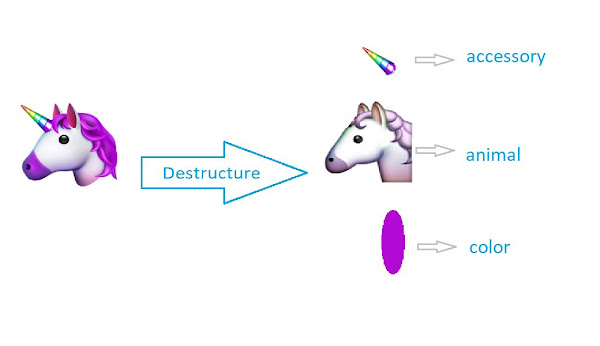Destructuring
Many times, you may encounter use cases where you need to return more than one item from a function. One way that people usually do is to create a custom object or class that contains those items.
Pair and Triple
Another choice is to use Pair class. For example,
fun square(input: Int): Pair<Int, String> =
if (input < 0)
Pair(input * input, "negative input")
else
Pair(input * input, "non-negative input")
val test = square(-5)
print(test.first) // 25
print(test.second) // negative input
Returning multiple values is great, but we’d like to a convenient way to unpack the results. As you can see, we can use test.first and test.second to access the component of a Pair. But we can also declare and initialize using a destructuring declaration.
val test = square(-5)
val (squareValue, inputType) = square(-5)
print(squareValue) // 25
print(inputType) // negative input
Similar to Pair, if you have 3 values, you can use Triple. But anything more than 3 values, you won’t find any other component.
Data Class
It is intentional that the maximum is
Triple. You should consider using special classes such asdata classif you have more than 3 values.
The data class also supports destructuring.
data class Result(
val value: Int,
val type: String
)
fun square(input: Int): Result =
if (input < 0)
Result(input * input, "negative input")
else
Result(input * input, "non-negative input")
val (value, type) = square(-5)
One important thing to take note for data class during destructuring is that we must assign values to the new identifiers in ==same order== that we define the properties in the class.
In case you do not need some of them, you can use underscore to skip it. For example,
val (_, type) = square(-5)
when we want to skip the first properties value.
Bonus
There are some special extension function in Kotlin built-in library such as List. You can use withIndex() extension that returns a collection of IndexedValues which can be destructured.
val list = listOf('x','y','z')
for((index, value) in list.withIndex()) {
print("$index:$value")
}
Summary
The destructuring declarations is a useful feature to extract properties from objects and bind them to variables.
What impresses me is that I can extract multiple properties in one statement and it looks so neat and tidy.
